Sauteed Doraji (Bellflower roots) - Learn how to make this traditional and classic Korean side dish! The unique and crunchy texture will have you coming back for more! This recipe is easy and vegan-friendly!
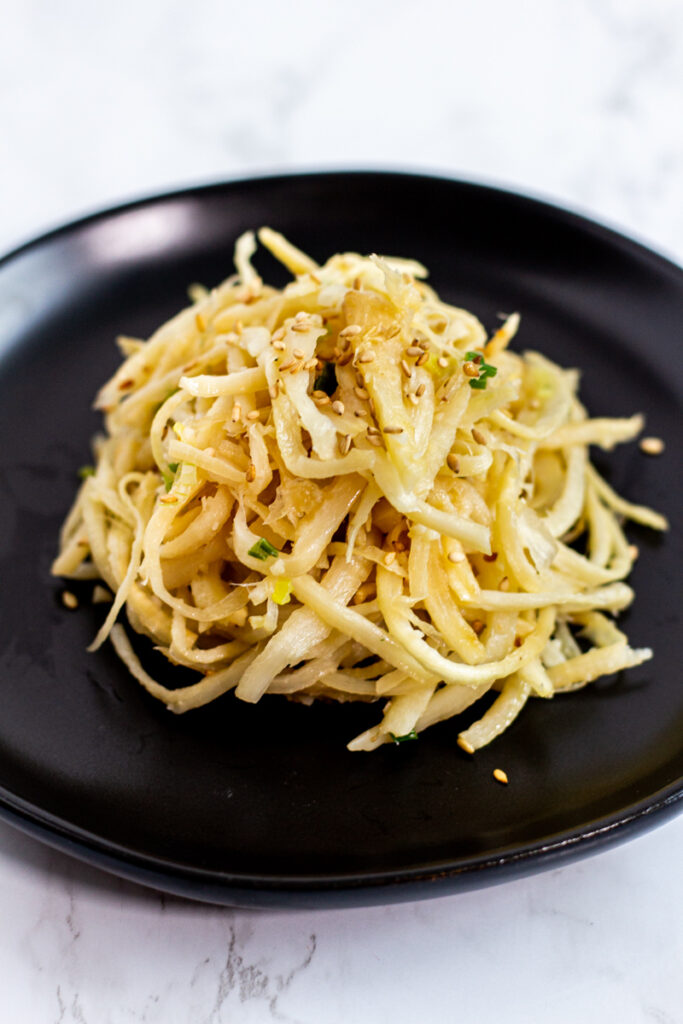
Doraji (bellflower roots) is a very familiar ingredient to Korean and not so familiar to most Americans. Koreans prepare this dish during major holidays (like lunar New Year and Korean Thanksgiving) and Jesa 제사 (ancestral ceremony). This classic side dish is popular in Korea due to its unique crunch texture with a slight bitterness.
What is Doraji 도라지?
Doraji 도라지 is the root of bellflower/balloon flower and it is native to East Asia. It is very bitter in taste and it involves soaking and rinsing multiple times to get rid of the bitterness when preparing the dish.
There are two main ways to prepare:
- Spicy and tangy salad using gochujang (Korean fermented red pepper paste) and gochugaru (Korean red pepper flakes)
- Non-spicy, sauteed way. It's called doraji namul (도라지 나물) and this recipe is how to make it non-spicy way!
What does it taste like?
If you had bibimbap (Korean mixed vegetable rice bowl), you might have had it. It is one of the traditional ingredients in bibimbap. It tastes very bitter so trying to take the bitterness out of it is a big part of preparation. In terms of texture, it is crunchy and fibrous.
Where can I buy it?
There are several forms that you can buy - fresh, hydrated, and dehydrated form. It is very difficult to find fresh doraji in America. However, when you go to the Korean grocery store, you can find the hydrated form in the refrigerated section and dehydrated form among other dried goods at the store.
If you are interested in making this dish and don't have access to a Korean grocery store, you can purchase them online.
How is my recipe different?
There are 3 things that I do that sets my recipe apart from other recipes.
- Instead of using Korean coarse salt directly to massage doraji, I soak them in salted water.
- I use the soaking method instead of a blenching method to get rid of bitterness.
- I season with Yondu (Korean plant-based seasoning sauce) instead of salt and soy sauce.
Helpful tips to make Sauteed Doraji
- Use Korean coarse sea salt instead of table salt. It is the sea salt that you would use to make Kimchi. If you don't have Korean coarse sea salt, you can use Kosher salt. If you were to use table salt, you have to cut down the amount to half.
- After soaking, massage them vigorously at least three times. This process gets rid of the bitterness and is an absolutely necessary step.
- If doraji looks dry when sauteeing, you can add a small amount of water (one tablespoon at a time).
- If you don't have Yondu, you can substitute them with soy sauce, water, and sugar (1 tablespoon of Yondu = 1 teaspoon soy sauce, 1 tablespoon water, and a pinch of sugar). Yondu adds great umami taste to the dish and I highly recommend it. The substitution will work but it won't have the depth of flavor that Yondu can provide.
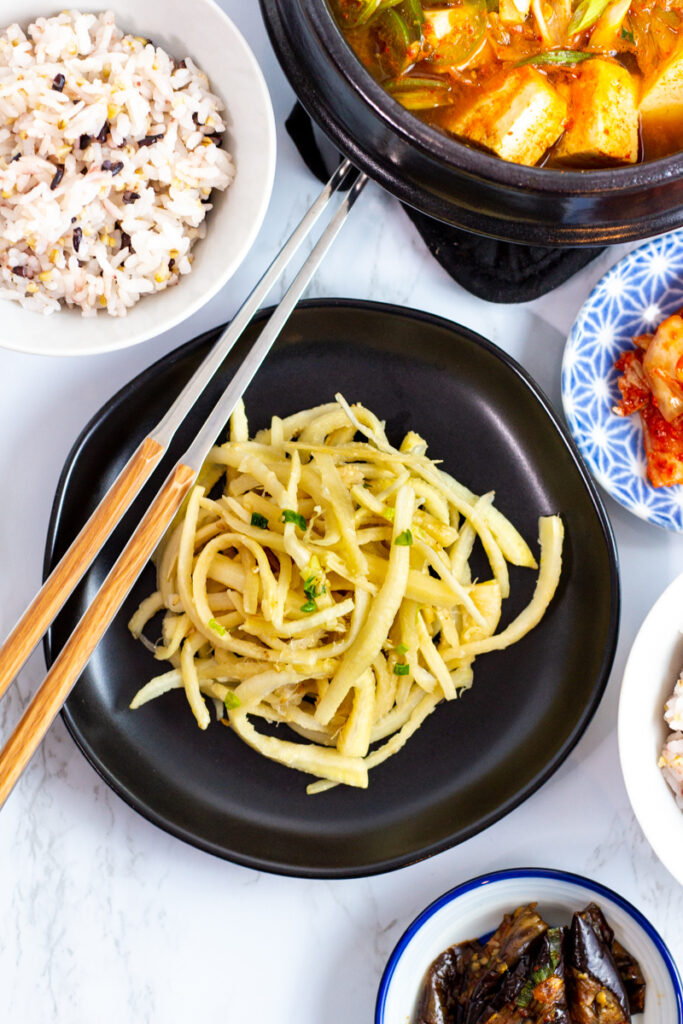
Sauteed Doraji (Bellflower roots)
Sauteed Doraji (Bellflower roots) - Learn how to make one of the traditional and classic Korean side dishes! It's easy and vegan-friendly!
- Prep Time: 75 minutes
- Cook Time: 5 minutes
- Total Time: 1 hour 20 minutes
- Yield: 4 servings 1x
- Category: Side Dish
- Method: Sauté
- Cuisine: Korean
- Diet: Vegan
Ingredients
- 2 ounces Dried doraji (bellflower roots)
- 1 tablespoon Korean coarse sea salt
- ½ tablespoon neutral-tasting oil such as avocado oil
- ½ tablespoon sesame oil
- 1 teaspoon minced garlic
- 1 green onion, thinly sliced
- 1 tablespoon Yondu
- 1 teaspoon sesame seeds (for garnish)
Instructions
- In a large bowl, add the Korean coarse sea salt and 2 cups of boiling water. Dissolve the salt and add the dried doraji. Add 1 cup of water on top and let it hydrate/soak for an hour.
- Drain and rinse under cold water. Then vigorously massage them. Rinse under cold water (the water will appear murky) and massage them again. Repeat at least 3 times. This process will remove the bitterness.
- Rinse under cold water again and squeeze out as much water as possible. If some of the doraji pieces are too thick, you can split them into thinner pieces by tearing them with your hands.
- On a pan, add the oil (both neutral-tasting oil and sesame oil) and cook the garlic and green onion for 30 seconds on medium heat. Careful NOT to brown the garlic. Add the doraji. Stir fry them for 2 minutes. Season with Yondu and continue to stir fry them for a couple of minutes.
- Garnish with sesame seeds and serve.
Notes
- Use Korean coarse sea salt instead of table salt. It is the sea salt that you would use to make Kimchi. If you don't have Korean coarse sea salt, you can use Kosher salt. If you were to use table salt, you have to cut down the amount to half.
- If doraji looks dry when sauteeing, you can add a small amount of water (one tablespoon at a time).
- If you don't have Yondu, you can substitute them with soy sauce, water, and sugar (1 tablespoon of Yondu = 1 teaspoon soy sauce, 1 tablespoon water, and a pinch of sugar). The substitution will work but it won't have the depth of flavor that Yondu can provide.



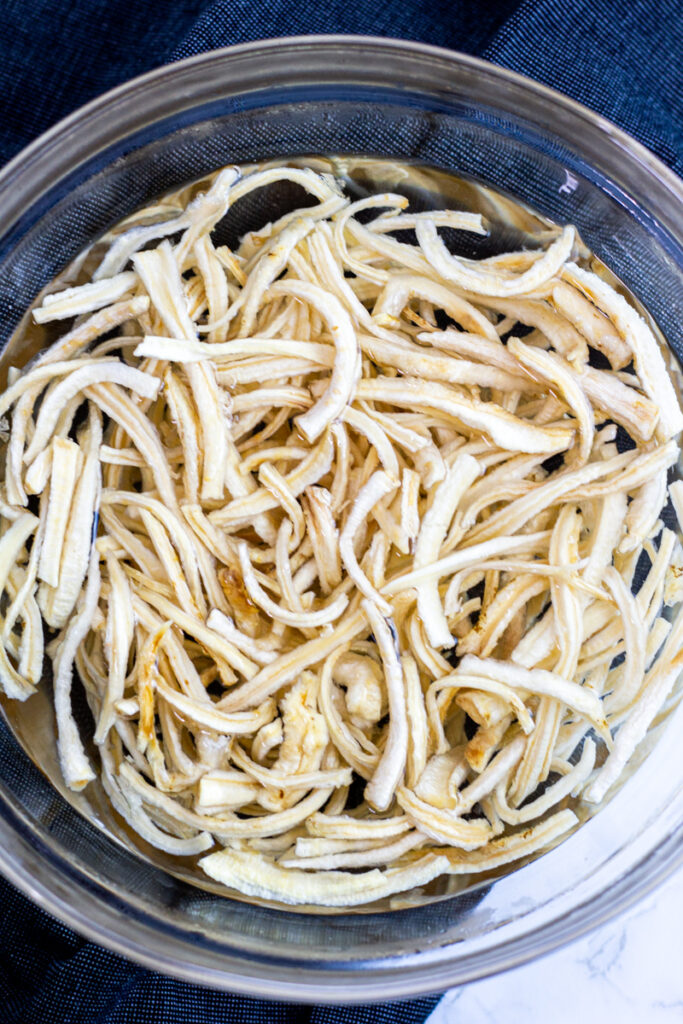
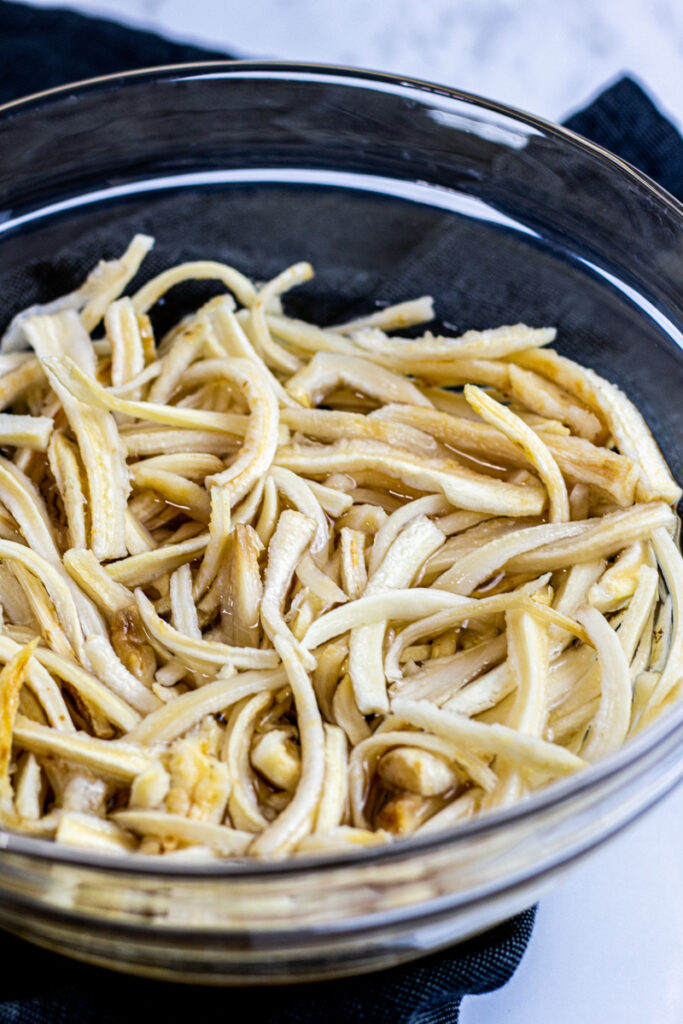
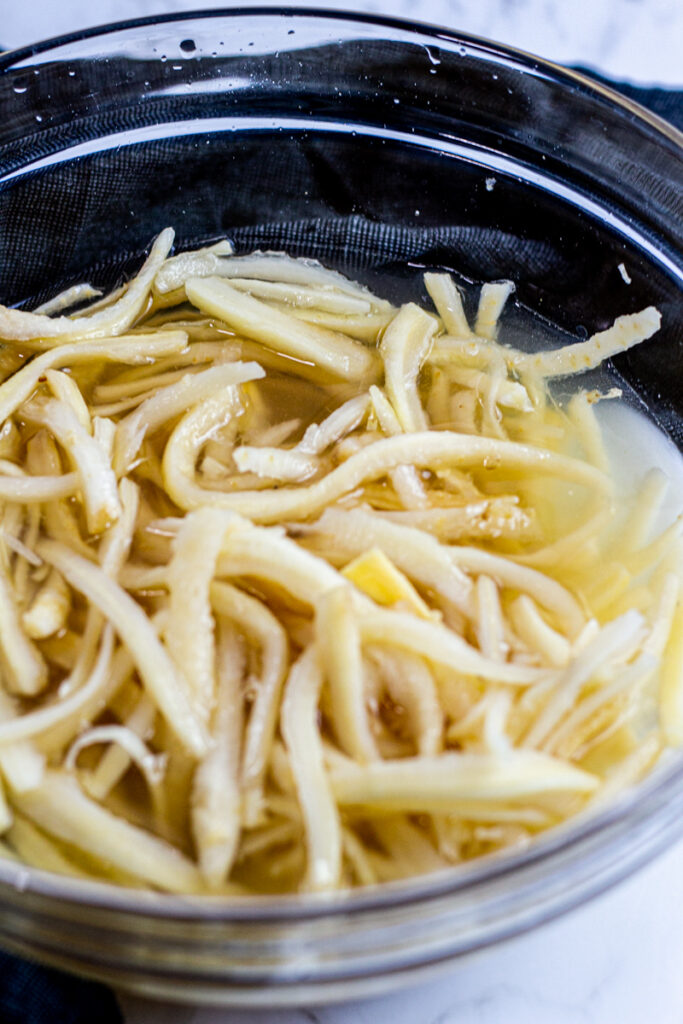
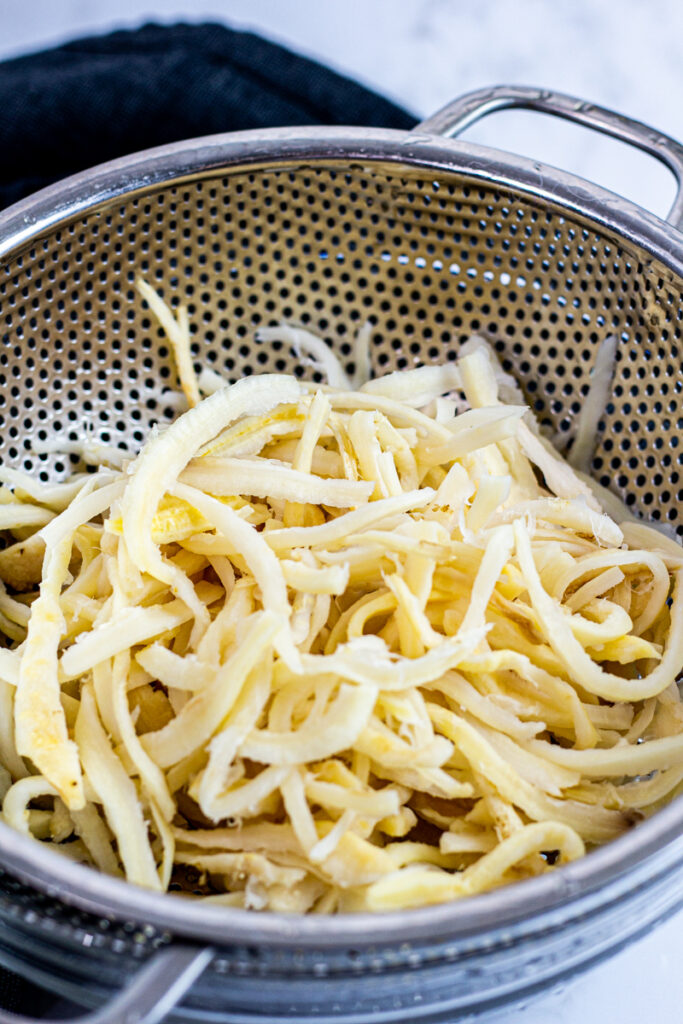
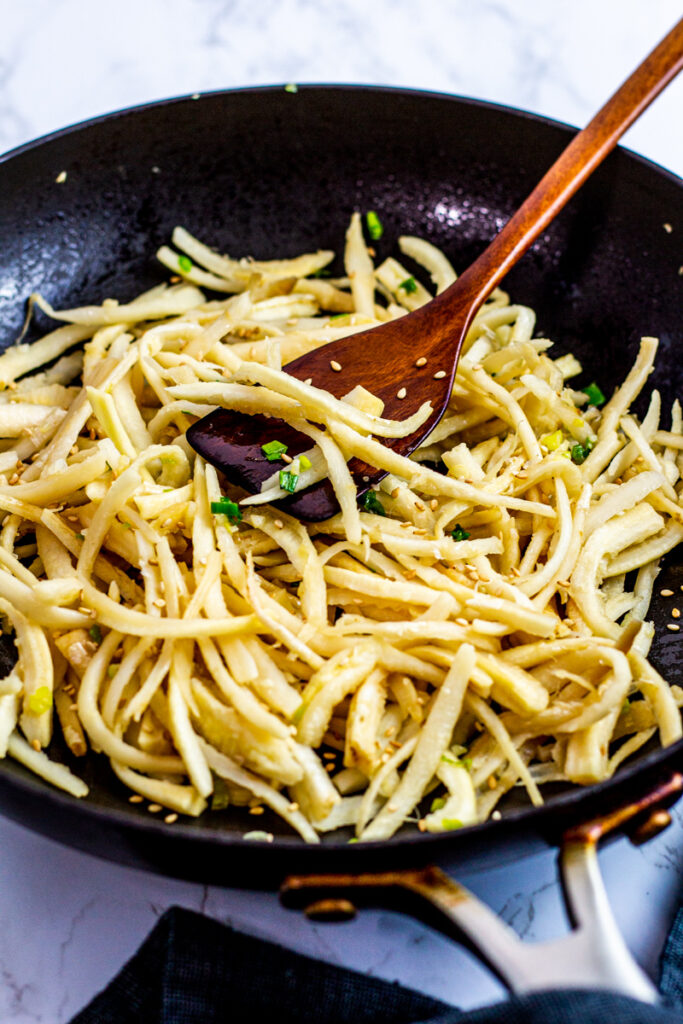
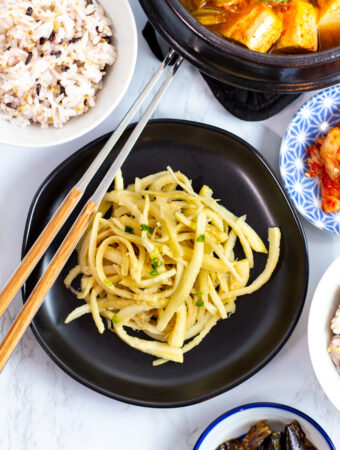
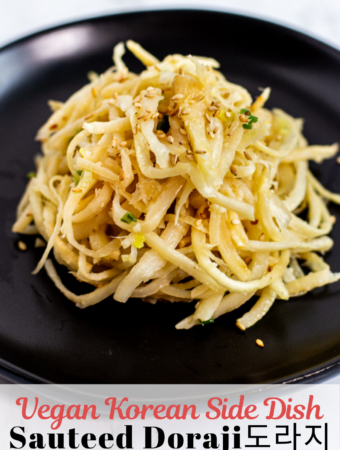
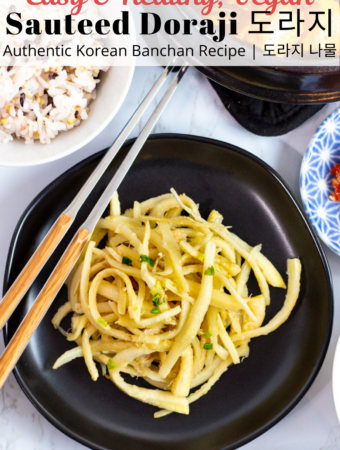

Leave a Reply